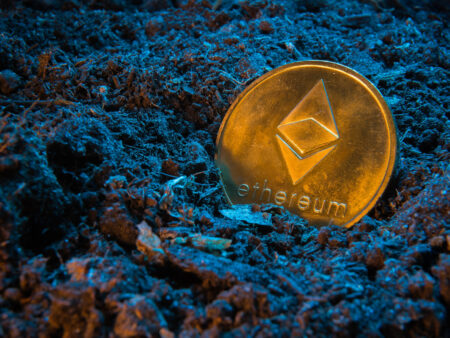The landscape of the Ethereum ecosystem is aflame with noteworthy developments as the average daily user growth within its ecosystem spiked by more than 55% in the first quarter of 2024, reaching a user base of 2.25 million. This surge signals a robust increase in network activity and underlines Ethereum’s unyielding presence in the cryptocurrency space. However, this uptick in adoption and usability has not translated into an immediate uptrend for Ethereum’s price, which on Thursday continued to maneuver along a horizontal trajectory, unable to break through a key resistance level.
Amidst the buzzing activity around Ethereum’s network, the Volatility Shares 2x ETH Futures ETF, known as ETHU, recorded a remarkable performance on its second day of trading. The volume for ETHU tripled, skyrocketing to $15 million. This is no ordinary feat considering it had already seen a substantial trading volume of over $5 million on its inaugural day. Bloomberg analyst Eric Balchunas commended the performance of ETHU, espousing it as “impressive,” given that ETF volumes tend to diminish post-launch.
The investment world’s embrace of Ethereum is further emphasized by the notable metric that despite the March Dencun upgrade which aimed at mitigating Ethereum’s gas fees, Ethereum Layer 1 continues to eclipse both the combined fee generation of Layer 2 solutions and competitor Solana. This steadfast performance is indicative of Ethereum’s entrenched position, affirming its relevance and attractiveness to users and developers alike.
Moreover, in trading news, Ethereum was observed trading around $3,840 on Thursday. The market witnessed long traders facing the largest liquidations, as ETH liquidations soared to $25.95 million within the past 24-hour frame. Only a day earlier, Ethereum faced rejection at the $3,900 level, and it now seeks to muster the momentum necessary to vault past this barrier before setting its sights on the higher $4,093 benchmark.
The dynamics of Ethereum’s infrastructure are not solely dictated by market movements but also by the progression of its technology. Namely, the staking mechanism, which incentivizes participants to lock away their assets for a duration to earn rewards, has gained traction across the blockchain ecosystems. Ethereum’s recent evolution from a Proof-of-Work (PoW) to a Proof-of-Stake (PoS) protocol through “The Merge” stands as a testament to its ongoing commitment towards not only enhancing security and scalability but also in substantially curtailing energy consumption.
To conclude, Ethereum’s ecosystem is proliferating in user engagement while simultaneously making waves in the investment sector with the impressive performance of the ETHU ETF. While its price continues to navigate through resistance levels, Ethereum’s underlying fundamentals and technological advancements suggest sustained growth and adaptation in the future. The quarters ahead will likely reveal the long-term impact of user growth and technological strides on Ethereum’s market positioning.









